Introduction
Are you looking to boost your e-commerce business and achieve sustainable growth in the ever-evolving digital marketplace? Look no further. In this article, we will provide you with expert advice and recommendations on how to create a comprehensive e-commerce strategy, optimize your website, enhance customer experience, leverage marketing channels and automation, implement retention and growth strategies, and measure success.
With a user-centric approach and a deep understanding of your target audience, you'll be well on your way to surpassing industry benchmarks and achieving top-tier performance. Get ready to take your e-commerce business to new heights.
Setting Benchmarks and Defining Success
To develop a thriving online business environment, it's crucial to begin with a strong foundation of strategic planning. Establishing clear benchmarks is akin to setting the navigational stars for a voyage—it empowers you to chart a course towards measurable achievements. When outlining success, revenue targets, customer acquisition, and conversion rates are pivotal metrics to guide your journey.
In the realm of e-commerce, understanding your audience's demographics—age, interests, spending habits—is vital for personalizing marketing campaigns and aligning product offerings with consumer desires. This approach is exemplified by the Boston Consulting Group (BCG), which espouses a transformational strategy that fosters organizational growth and societal benefit.
As we steer towards 2024, the digital commerce terrain is being reshaped by pivotal trends, such as the rise of AI in generating content and images. For instance, the implementation of AI in the Dublin Town To Go store at Dublin Airport, which operates without checkouts, illustrates the innovative direction the industry is heading.
Further, successful demand forecasting in sectors like fashion and beauty is notoriously challenging. The Black Friday/Cyber Monday (BFCM) period, with its surge in demand, underscores the importance of leveraging historical data in tandem with current industry trends for inventory planning. Stockouts and overstocking both carry significant risks—meticulous planning is your best defense.
Delineating a broad product range through parent listings can enhance customer reach and cross-selling opportunities, but it's crucial to avoid over complication that could detract from business valuation. According to Natalie Parkes, a freelance writer, building a successful online store necessitates dedication, planning, and a touch of creativity
Ultimately, the goal is not just to meet the industry's average conversion rates but to surpass them, striving for top-tier performance. Remember, the online shopping industry is not stagnant; it's a constantly changing system that requires ongoing adjustment and investment in both assets and creativity.
Understanding Your Target Customer
Crafting a successful e-commerce growth strategy hinges on a nuanced understanding of your target audience. Exploring market research is vital; utilizing tools like surveys, interviews, and analytics information can reveal essential insights into consumer behavior. For example, a case study featuring Whiskique, an online pet supply company, emphasized the significance of analyzing sales information to identify demographics and purchasing trends. By analyzing information from different platforms, you can develop comprehensive consumer profiles and comprehend the decision-making journey your clients undergo, which is crucial in customizing your products to meet their requirements and minimizing cart abandonment. Additionally, it's important to recognize that while targeting an "Ideal Customer Profile" (ICP) sharpens your marketing focus, your homepage must still communicate effectively to a diverse audience to prevent potential customers from feeling excluded. Embracing data science in retail leads to a commercially-minded collaborative environment that uncovers new opportunities. Incorporate industry benchmarks and insights from digital marketing, advertising, and online business to inform your strategies. Moreover, conversion rate optimization (CRO) can serve as a powerful tool in refining your website to convert visitors into customers more effectively, thereby leveraging your marketing efforts to yield a higher return on investment.
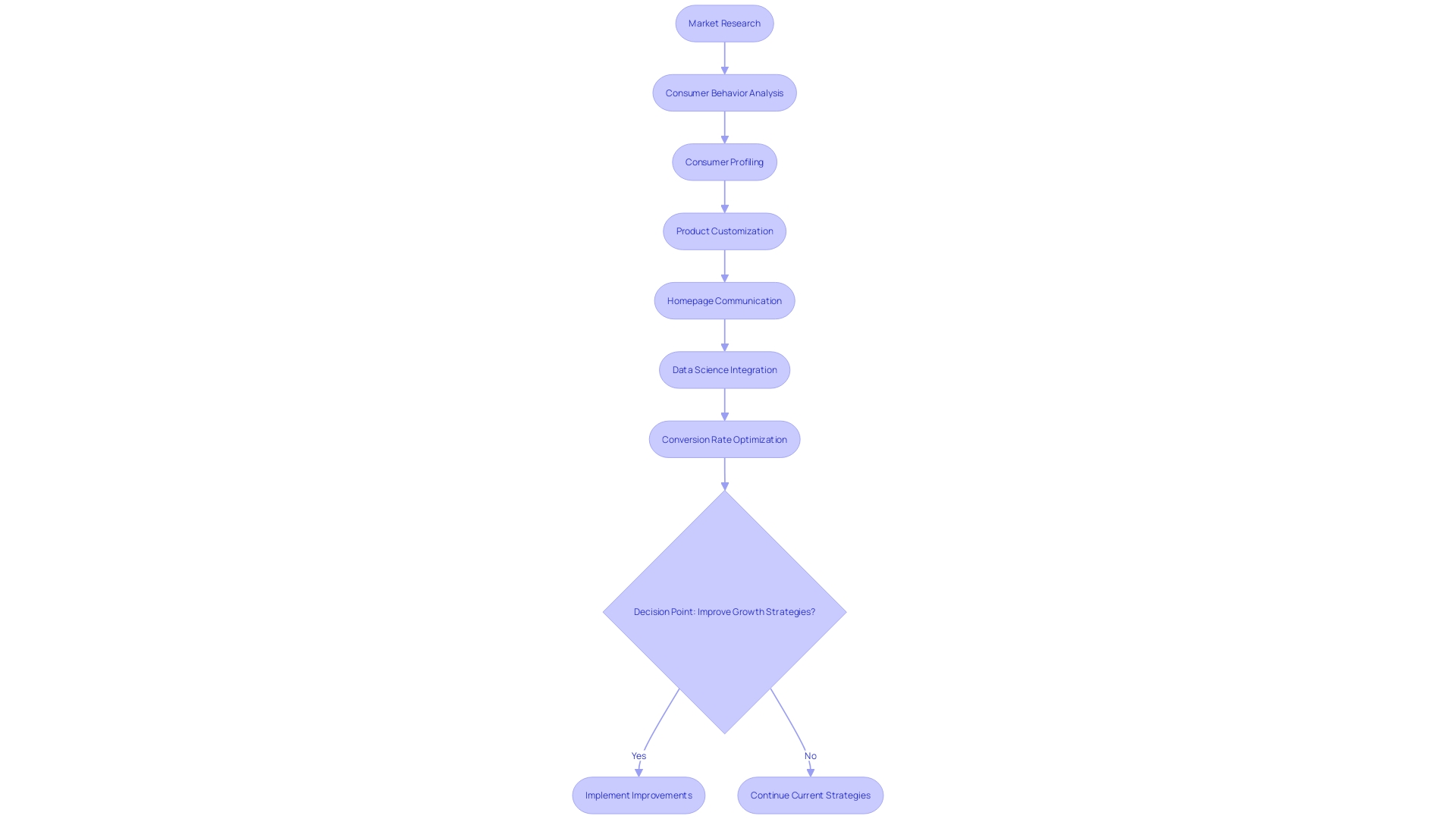
Creating a Comprehensive E-commerce Strategy
Navigating the complexities of e-commerce growth requires a strategic approach rooted in understanding your market and leveraging the right mix of digital tools. Your business's unique value proposition is the cornerstone of your growth strategy. It's essential to clearly define and communicate what sets you apart from the competition. Equally important is identifying and understanding your target market segments to tailor your marketing efforts effectively.
To optimize your reach, it's crucial to utilize a blend of marketing channels. SEO, social media, and email marketing are not just avenues for promotion but also powerful platforms for engagement and brand building. For instance, Dick's Sporting Goods' success can be attributed to their strategic market positioning and data-driven decision-making, which now commands a significant share of the sporting goods market. Their approach to growth through concentric circles of expansion showcases the importance of strategic marketing and distribution planning in controlling costs and enhancing market presence.
Furthermore, integrating content marketing and influencer collaborations can greatly enhance brand awareness and engagement. These tactics are supported by evidence suggesting that creativity is essential for businesses looking to stand out in a crowded digital landscape. In fact, almost 66% of senior executives acknowledge that efficiency has come at the expense of the time required to be creative, which is an essential element of experience with clients.
Your e-commerce approach should also give priority to science of information to gain insights into consumer behaviors, preferences, and purchasing patterns. Through the examination of information gathered from diverse platforms, you can gain a deeper comprehension of consumer personas, optimize the procedure of acquiring customers, and decrease both churn and basket abandonment. Aligning your marketing plan with data insights allows for a more personalized and effective approach to client engagement.
Furthermore, pricing tactics, promotions, and customer loyalty efforts are essential components of a comprehensive online business approach. These elements should be informed by an understanding of industry benchmarks such as average conversion rates, ensuring that your efforts are competitive and aligned with market expectations.
In the end, the objective is to create a strong online business approach that not only reaches but connects with your audience, driving sustainable business growth in an ever-changing digital marketplace.
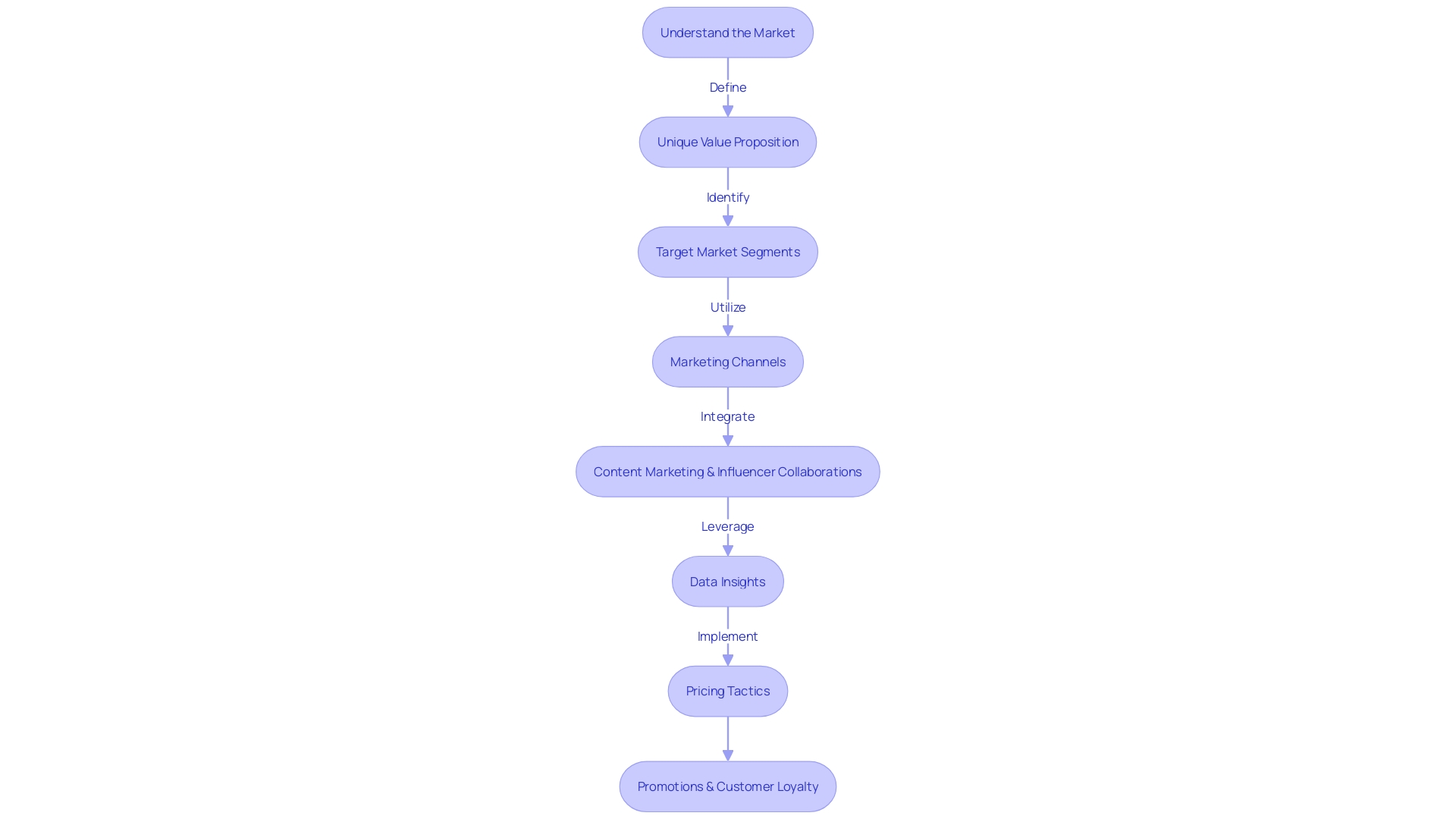
Optimizing Your E-commerce Website
Optimizing your e-commerce website is a pivotal step in fostering business growth. A user-centric approach ensures that your website is accessible, swift, and responsive across all devices. High-quality product imagery is the first thing individuals seek; striking a balance between image quality and load speed is essential for engagement and conversion. Detailed product descriptions and genuine customer reviews further enrich the product pages, providing the transparency and information that today's consumers demand.
Streamlining the checkout process and providing a variety of payment options can significantly diminish cart abandonment rates, while targeted search engine optimization (SEO) strategies can elevate your website's visibility, drawing in more prospects. Competitor SEO analysis reveals market trends and untapped opportunities, which can refine your overall digital marketing approach. Marsha Collier, a specialist in online business, emphasizes the significance of adjusting to new platforms and client anticipations to remain competitive in the constantly evolving online marketplace.
Consistently reviewing website performance information is not just a routine task; it's an opportunity to implement information-driven enhancements. By investing time and resources into your website's performance, as advocated by 43% of small businesses, you not only improve the user experience but also bolster conversion rates. Incorporating evolutionary design principles into your website's ongoing development ensures gradual improvements that align with organizational goals and user feedback.
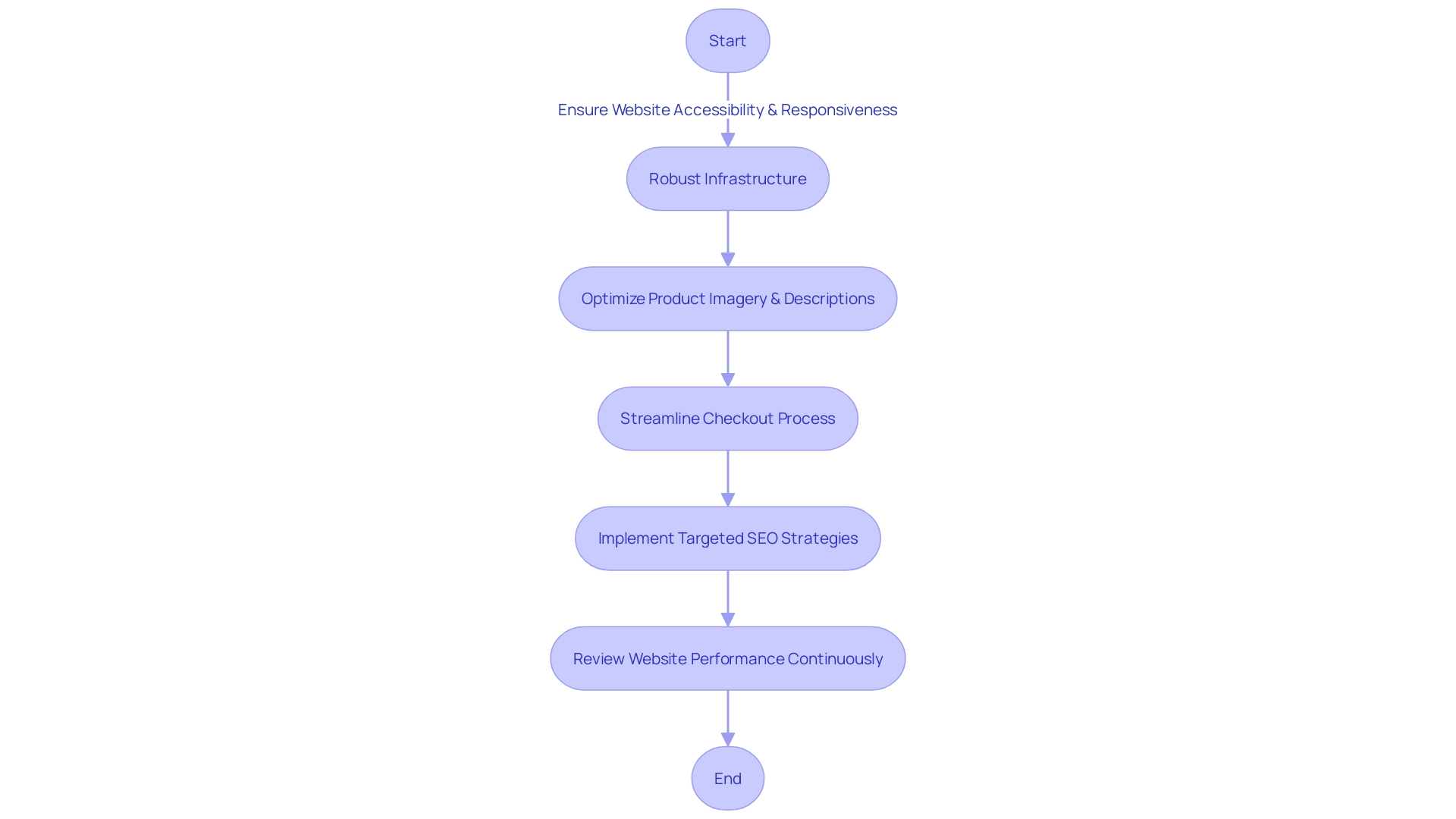
Enhancing Customer Experience
In the domain of online business, an outstanding experience for clients is not only an objective, but a key component for achieving success. To personalize the shopping journey, use data science to analyze preferences and purchase history, offering tailored product recommendations that resonate with each individual's tastes and needs. Embrace the power of conversational commerce; deploy chatbots and AI-driven virtual assistants to provide individuals with real-time, personalized service reminiscent of the attentiveness once exclusive to physical retail spaces. Streamline the return and refund process to alleviate concerns and enhance trust. Obtain insights from feedback and reviews, utilizing them as a guide for ongoing refinement of products and services. These strategies, when combined, foster loyalty and promote repeat business, essential to an e-commerce platform's growth and satisfaction of buyers.
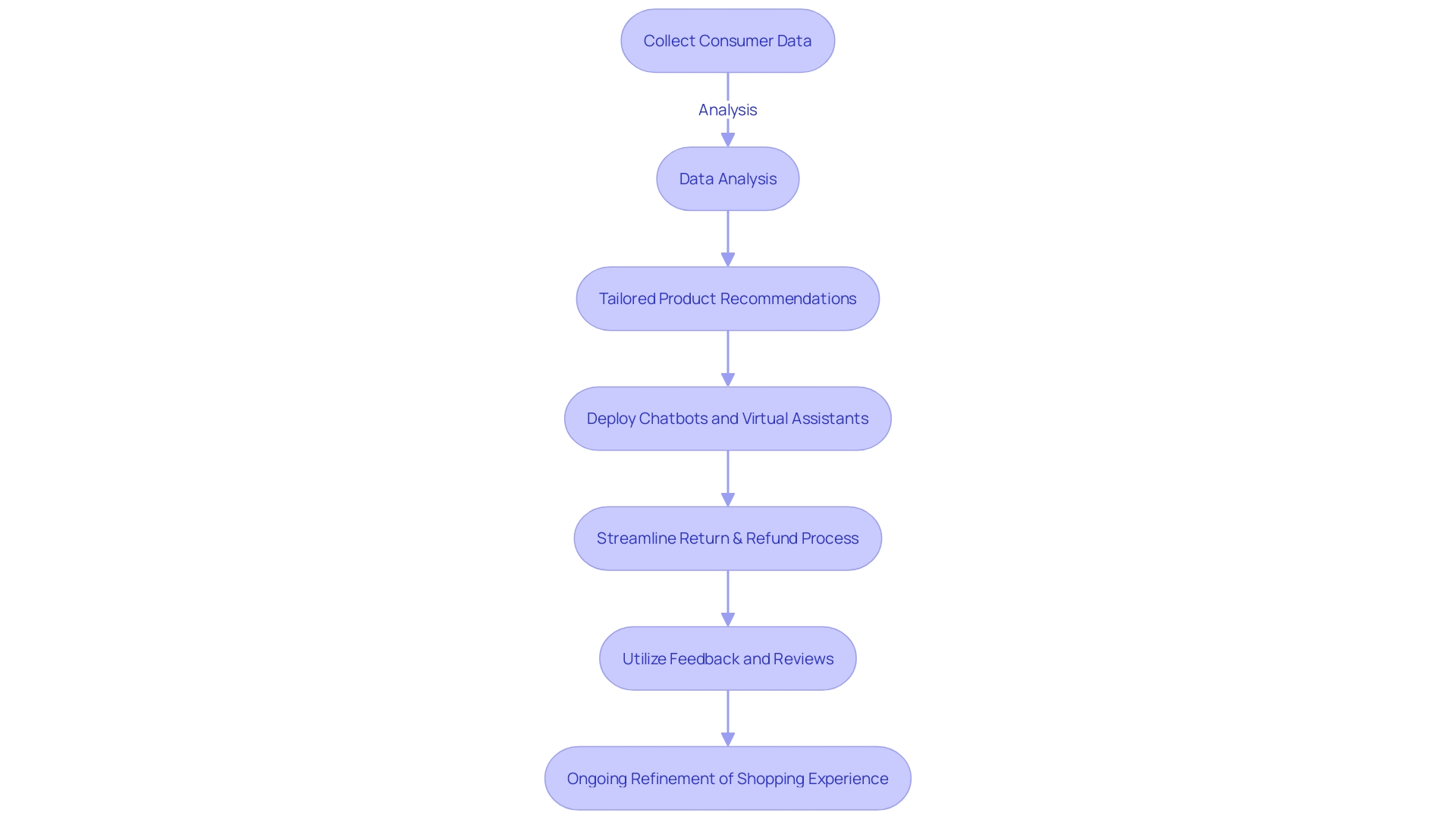
Leveraging Marketing Channels and Automation
E-commerce businesses are constantly striving to optimize performance and enhance engagement. To remain competitive and boost online sales, adopting a multi-channel marketing approach is indispensable. The integration of social media advertising, targeted email marketing, and strategic influencer partnerships can lead to significant growth. For instance, Currys demonstrated that revamping their marketing campaign setup to reduce operational inefficiencies is key. They automated daily tasks, enabling their team to concentrate on timely and relevant interactions with their clients.
Automation tools are essential in streamlining e-commerce operations. By implementing email sequencing, you can ensure individuals receive relevant content at critical touchpoints, a practice known for its effectiveness. Automated abandoned cart reminders and personalized offers are also powerful tactics. These methods not only save on manual labor but significantly enhance user experience.
The importance of marketing automation is underscored by statistics revealing its impact on business outcomes. Companies utilizing automation report substantial improvements in conversion rates, often reaching the top 10 percentile of performers in their industry. Additionally, the collective insights from industry experts suggest that the ecommerce sector is poised for transformation, with unified commerce as the focal point. However, achieving this requires overcoming the challenges of outdated legacy systems through alignment and cross-functional collaboration among all decision-makers.
The digital marketing landscape is constantly changing, with new developments like AI and generative AI affecting approaches. A strong relationship management (CRM) system is therefore essential to handle the abundance of first-party data and maintain strong client relationships. As businesses aim to deliver customized experiences on a large scale, a carefully selected CRM tool is becoming an essential asset in the arsenal of growth strategies.
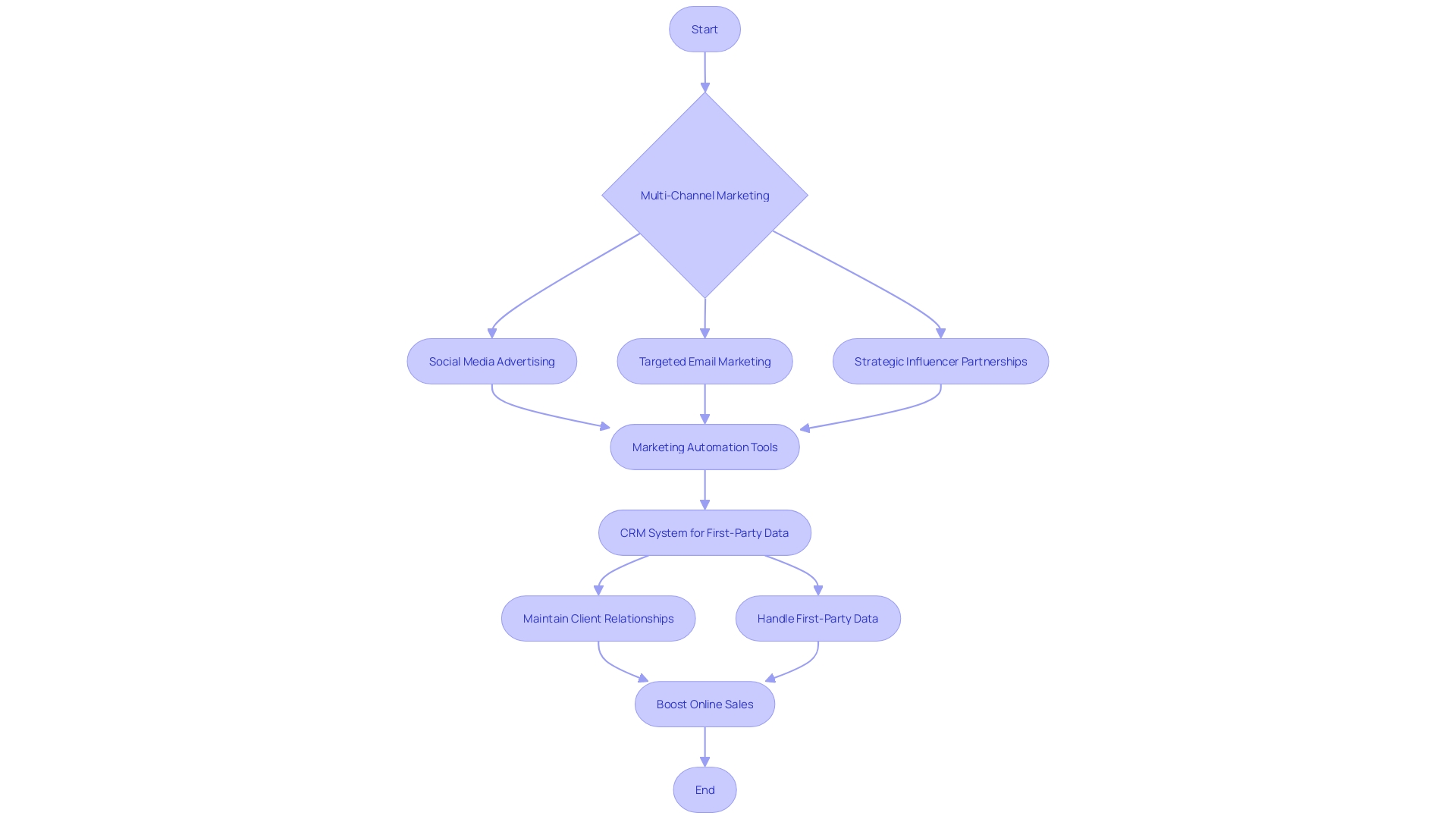
Strategies for Retention and Growth
To drive e-commerce growth, businesses must focus on both retention and acquisition. Implementing digital loyalty programs that offer redeemable points or cash back can lead to deeper engagement. For instance, transforming traditional punch cards into mobile app-based rewards caters to the modern consumer’s digital lifestyle, providing convenience and instant gratification.
Examining client information is crucial in discovering opportunities for upselling and cross-selling. With the expenses of acquiring information increasing due to regulations on privacy, leveraging existing relationships with clients becomes even more cost-effective. Brands utilizing data to comprehend client behaviors, such as retention and spending patterns, are better positioned to maximize post-acquisition value, a metric essential for evaluating the ongoing worth of an individual beyond the initial purchase.
Strategic partnerships with businesses that complement your offerings can introduce your products to new audiences. This approach is crucial, especially considering the recent shifts in the retail landscape, where even well-known retailers face bankruptcy, and direct-to-consumer brands struggle under economic pressures. By collaborating, companies can broaden their market reach without bearing the full brunt of customer acquisition costs.
Finally, consistently reviewing and improving your online business approaches are crucial for continuous expansion. As the online business sector progresses rapidly, sustaining flexibility in your growth approaches guarantees that your business can adjust to shifting market dynamics and consumer behaviors.
Implementing and Measuring Success
To guarantee the triumph of your online business planning approaches, thorough execution and performance monitoring are essential. Designate responsibilities and create a clear schedule for execution. Utilize Key Performance Indicators (KPIs) to track the impact of your approach and regularly evaluate the results to identify possible improvements. Utilize data to refine your e-commerce strategies continuously, fostering sustained progress.
Data collected from online consumer interactions is a gold mine for understanding client personas, purchasing patterns, and the efficacy of various channels in advancing them through the purchasing decision process. This information is not only crucial for acquiring customers but also for devising tactics to reduce customer churn and prevent shopping cart abandonment. Embracing data science can foster a commercially-focused collaborative atmosphere, unlocking new opportunities for growth.
Consider the insights from MediaMarkt, Europe's electronics retail giant, which leverages both its extensive physical store network and its significant online presence. In a changing retail environment where online Dutch shops have surpassed brick-and-mortar stores, MediaMarkt leverages online approaches to boost in-store sales.
Moreover, achieving unified commerce requires overcoming the challenges of outdated legacy systems through alignment and multi-disciplinary teamwork. This collaborative effort is vital for success, as indicated by the diverse range of decision-makers who must work in concert to deliver a cohesive shopping experience.
In light of the ever-changing retail environment, where inflation and living costs define market conditions, businesses must adapt. E-commerce platforms are instrumental in this regard, offering a range of features that cater to diverse budgets and product offerings. Ensuring that your website is user-friendly, SEO-optimized, and mobile-compatible is essential, and may benefit from the expertise of a professional web designer.
Email marketing remains a potent tool, with the highest Return on Investment (ROI) among marketing approaches, reaching a global user base of over 4 billion people. On the flip side, comprehending and enhancing your online business conversion rates is vital, as aiming to surpass industry averages can greatly improve your business performance.
These insights and strategies are not only theoretical but are supported by real-world examples and current industry data. They offer a practical framework for e-commerce directors to refine their online operations and secure a competitive edge in the digital marketplace.
Conclusion
In conclusion, a comprehensive e-commerce strategy is essential for achieving sustainable growth in the digital marketplace. By setting clear benchmarks, understanding your target audience, optimizing your website, enhancing the customer experience, leveraging marketing channels and automation, implementing retention and growth strategies, and measuring success, you can surpass industry benchmarks and achieve top-tier performance.
Setting clear benchmarks, such as revenue targets and conversion rates, empowers you to chart a course towards measurable achievements. Understanding your target audience's demographics and personalizing marketing campaigns accordingly is vital for success.
Optimizing your website ensures accessibility, speed, and responsiveness across all devices. Providing high-quality product imagery, detailed descriptions, and a simplified checkout process can enhance customer engagement and conversion rates.
Enhancing the customer experience through personalization, conversational commerce, and simplified returns cultivates loyalty and encourages repeat business. Leveraging marketing channels and automation, such as social media advertising, targeted email marketing, and automated abandoned cart reminders, significantly boosts online sales.
To drive e-commerce growth, focus on both customer retention and acquisition. Implementing digital loyalty programs, analyzing customer data for upselling and cross-selling opportunities, and forming strategic partnerships deepen customer engagement and broaden market reach.
Regularly revisiting and refining e-commerce strategies is essential for sustained growth in the ever-evolving digital landscape. Meticulous implementation, performance tracking, and data-driven insights are crucial for measuring success and making continuous improvements.
By following these expert recommendations and adopting a user-centric approach, you can achieve top-tier performance in your e-commerce business. Embrace innovation, invest in resources, and take your e-commerce business to new heights.
Improve your customer experience and cultivate loyalty with our personalized solutions.





